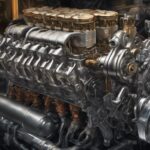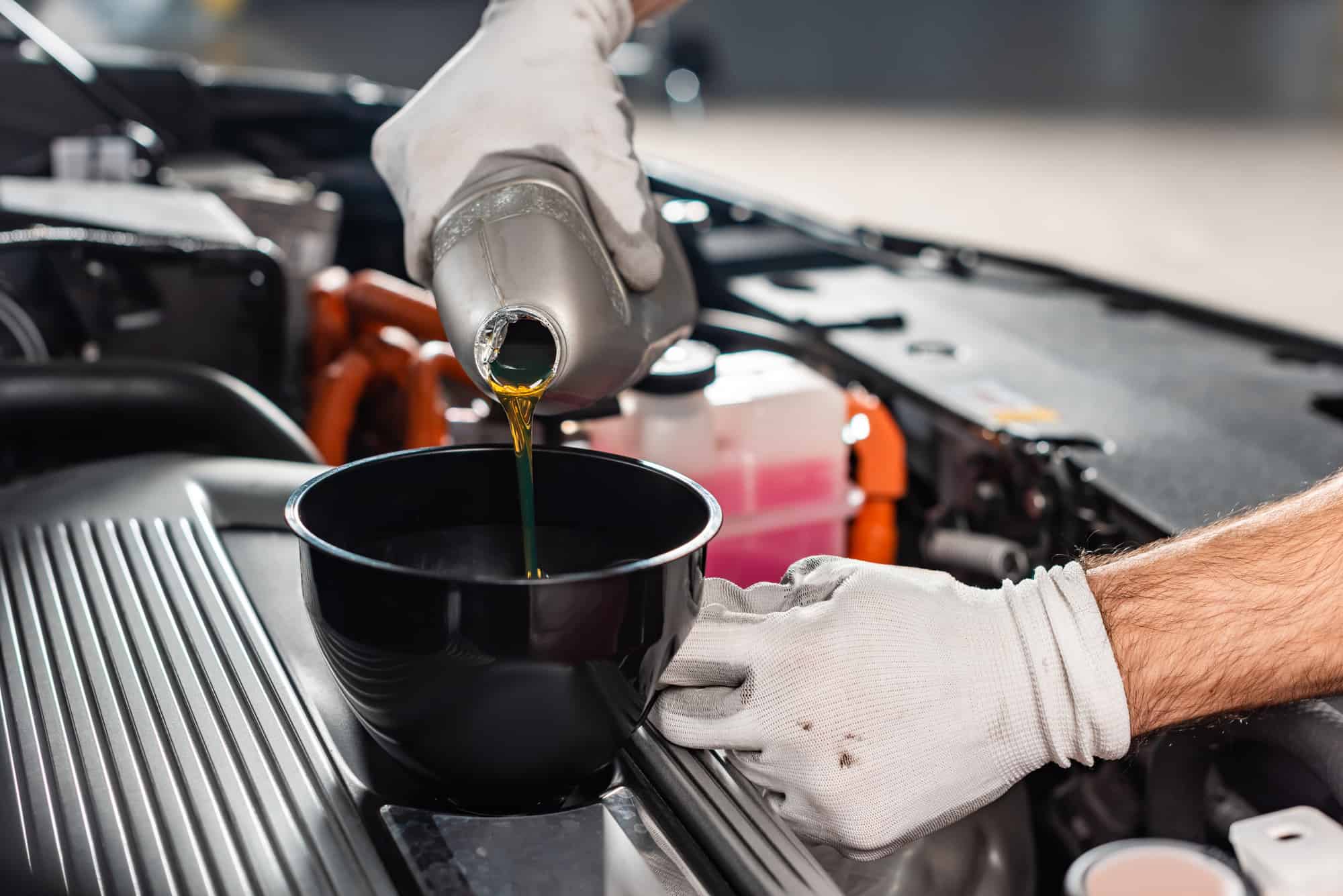If your car won’t start after an oil change, it is likely due to a few reasons. One common reason is that the oil filter was not installed correctly, which can cause oil to leak out and prevent the engine from starting. Another possibility is that the oil drain plug was not tightened properly, causing oil to leak out and reducing the oil pressure needed to start the engine.
In some cases, the wrong type of oil may have been used, which can cause engine damage and prevent the car from starting.
Refilling the engine with too much or too little engine oil, using a less permeable, low-quality oil filter, or maybe not refitting the oil filler cap securely can also prevent the engine from starting.
How Can An Oil change stop your car from starting (5 Causes)?
Problems that occur after an oil change are usually caused by using the wrong engine oil, oil filter or by not reinstalling parts that may have been removed. Here are the most common causes in more detail.
Cause 1. Wrong engine oil used
Using the wrong engine oil could result in the engine not starting, especially if it is a newer engine that has very specific engine oil requirements.
Modern synthetic engine oils are complex liquids that contain a variety of additives that are designed to protect the engine across a wide range of driving conditions. It is really important that the correct specification of oil is used in the engine to prevent long-term damage from occurring.
A very important part of the oil specification is the oil viscosity, especially when it is cold. Most of the wear and potential damage to an engine occurs on a cold engine startup.The weight or thickness of the oil when it is cold can affect how quickly it travels around the engine and how effectively it coats the engines’ inner surfaces.
Cause 2. Not enough engine oil added
If you don’t refill the engine with the correct amount of engine oil, this can affect the oil pressure within the engine and the engine may not start.
When your car is running, engine oil is pumped around the engine by an oil pump that is usually located in or near the oil sump. The ECU keeps track of the engine oil using two main types of sensors, the oil pressure sensor, and the oil level sensor.
The oil level sensor is usually located in the oil sump and if it detects a low oil level this can stop the engine from starting. Likewise, the oil pressure sensor keeps track of the oil pressure as it is pumped around the engine. If insufficient oil pressure is detected when the engine is starting up, the ECU may shut down the engine to protect it from damage.
Cause 3. Oil filler cap damaged or not refitted
The engine may not restart after an oil change if the oil filler cap is damaged, leaking, or not refitted properly. The oil filler cap is located at the top of the engine and is used to allow access to the engine when refilling the engine oil. When it is refitted it creates an air-tight seal so that oil pressure can increase within the cylinder head when the engine is running.
If when changing the oil, the filler cap is not refitted tightly or at all, then this can cause a lack of oil pressure or a significant loss of oil if the engine manages to start. Leaking oil can cause damage to other nearby engine parts such as the alternator, the timing belt, or the ignition coils that can also prevent the engine from starting.
Cause 4. Oil filter not changed or the wrong type of oil filter fitted
Fitting the wrong specification oil filter or not replacing an old worn oil filter can have a detrimental effect on the flow of oil within the engine that can prevent the engine from starting.
Generally speaking, an engine will use a specific type, shape, and size of oil filter. Some engines use a spin-on filter that connects to the outside of the engine near the sump, or an engine may use a filter element that is slotted into an oil filter housing. It’s important to choose the right size filter to prevent leaks and to maximize the filtering efficiency of the filter. It’s also important to choose a good quality filter that will remove and retain contaminants from the oil.
The wrong oil filter can potentially block the passage of oil within the engine leading to a large drop in oil pressure that will prevent the engine from running properly.
Can Oil on a Clutch Plate Cause a Car to Not Start After an Oil Change?
After an oil change, detecting oil on clutch plate may be a sign of a potential problem. Oil on the clutch plate can cause slippage, making it difficult for the car to start. If you notice this issue after an oil change, it’s important to address it promptly to avoid further damage to the vehicle.
Cause 5. Damage to wiring or a sensor
If an engine component such as a sensor or sensor wiring gets damaged during the oil change process, this may trigger the check engine light and result in the engine not starting.
Changing the oil on modern vehicles usually involves removing some plastic covers and possibly moving aside some hoses or wiring to gain access to the oil filter or the oil sump drain bung. If you are not careful it is possible to cause damage while carrying out an oil change.
If the engine won’t start after the oil has been changed and you’ve got a check engine light on the dash, double-check that there is no loose or damaged wiring near the oil filter. You should check that sensor wiring or coolant hoses have not become trapped under plastic covers when they have been refitted.
Car won’t start after an oil change – What Should You Do Next?
If your car won’t start after you have finished an oil change then there are a few things you can easily check that will usually help to resolve the problem, depending on the exact symptoms.
If there is a check engine light on the dashboard then this means that the ECU has detected a fault somewhere in the engine and this could be preventing the engine from starting. Sometimes the problem may be as simple as a loose connector or a detached hose.
- Check the ECU for engine error codes. If possible, you should always start any troubleshooting by carrying out a diagnostic readout of any error codes. This will help to narrow down the cause of the problem. Engine error codes related to low oil pressure following a recent oil change may include P0522 or P0524. You may also see engine misfire codes P0300 to P0306.
- Check for oil leaks. A substantial oil leak can prevent an engine from starting. Sometimes oil can leak from the oil sump or from the oil filter housing after an oil change if they have not been fitted properly. If you have drained the old oil via the oil sump (instead of sucking it out of the engine) then you need to double check that the sump nut has been retightened and to the recommeneded torque. Some sump nuts have a brass washer that needs to replaced at every oil change, so make sure that this has been fitted. Check for oil leaks from around the oil filter where it touches the engine block or from the oil filter housing cap (if it’s an oil filter element).
- Check oil levels and oil type. Using the dip stick, check that there is sufficient oil in the engine. Not all cars have dip sticks, some have a digital guide on the dashboard but the engine usually needs to be running for a while before this will give you an accurate oil level readout. If there is no dipsitck, double check that you have added the correct amount of oil and that the oil specifications and viscosity are correct. Most of the time you will get away with the oil being the wrong viscosity as long as it does not differ too much from the recommended weight.
- Check for damage to the engine. Damage to a sensor, wiring or a hose may be preventing the engine from starting. If the engine diagnostic did not return any engine error codes, start by checking around the area of the engine that you were working on. Look for loose sensors or wiring, damage to wiring and damage to vacuum hoses. Make sure that hoses are tight and are not trapped underneath plastic covers that you have refitted. Double check that the oil filler cap tightens and that the rubber seal is in good condition.







After adding oil and discovering my car won’t start, how can I specifically identify if the issue is due to using the wrong oil type without having to drain what I just added?
After changing the oil myself for the first time, my car won’t start. Could it be because I didn’t check the engine error codes beforehand?